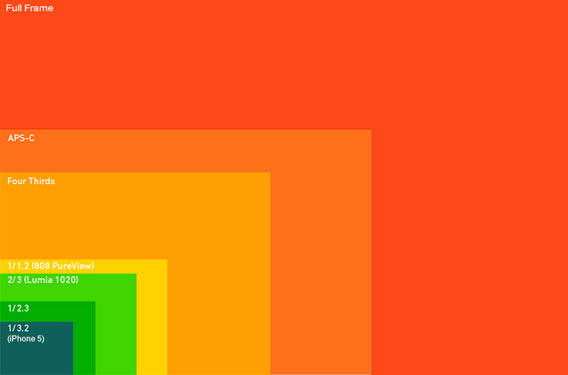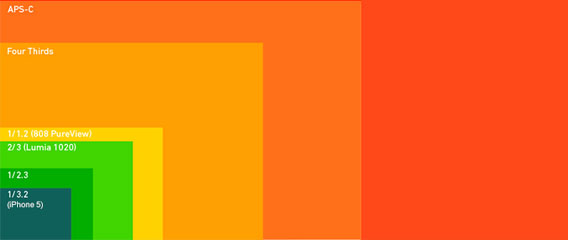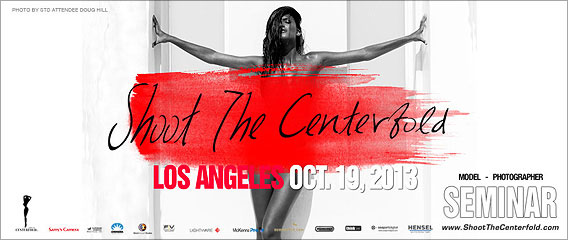The MegaPixel War
Mention megapixels to any photographer and you’ll be met with either a long explanation or stony silence. However, everyone, photographer or otherwise, is certain the more megapixels the higher the quality, which mirrors film’s long-dead ASA assertions and misconceptions of the higher the number, the better the quality.
In 2003, the difference between 1.3MP and 3MP was visibly astounding and many photographers overlooked the boxy, nondescript contraptions with wafer-thin 256mg memory cards because image quality was still the domain of film cameras.
In recent years, the term “quality” has become a bit more ambiguous. For the past few years, cellphone cameras seemed no match for their illustrious counterparts. However, phones are now capable of supporting a 40MP sensor, and the war between traditional cameras and Smartphones seems to have once again reared its ugly head.
The flagship of the megapixel conflict is the Nokia Lumia 1020 which comes fully armed with a 40+MP sensor. Although it has received a great deal of attention since its announcement, people on both sides of the trenches have vociferously begun making their opinions known.
Stepping into the fray, Sony unveiled its new champion, the i1 Honami, but wielding only half the megapixels of its adversary. It would seem the megapixel war, long thought dead and buried with the demise of the point & shoots, has been revived by a new contender in the shape of a glorified computer half the size of a pack of cigarettes.
 Magic Lantern recently enabled 14 stops of dynamic range to the Canon 5d MkIII and 7d models, a statistic that is going to improve image quality more than a sensor’s pixel density count ever will. More than just a photo buzzword, dynamic range is a means of establishing how much detail is captured in shadows and highlights. While the actual explanation is a little more complex than that, what this means to the average photographer is that dynamic range stops are a far better and inherently more useful statistic than megapixel ratings could ever hope to achieve.
Magic Lantern recently enabled 14 stops of dynamic range to the Canon 5d MkIII and 7d models, a statistic that is going to improve image quality more than a sensor’s pixel density count ever will. More than just a photo buzzword, dynamic range is a means of establishing how much detail is captured in shadows and highlights. While the actual explanation is a little more complex than that, what this means to the average photographer is that dynamic range stops are a far better and inherently more useful statistic than megapixel ratings could ever hope to achieve.
With that being said, it’s obvious that memory and storage is going to become a far bigger issue than ever before. With phone companies dumping expandable memory, consumers (that’s you and me, by the way) are going to run into a very real problem. Do the math; Nokia recently released a 13MB sample. Impressive, but that totals up to less than 700 images available on a blank 16g card. Your phone already comes with up to 5g of data already on it. Believe me when I say those numbers add up quickly if you snap pics or add music on a daily basis. If you’re like most people, you still have pictures on your phone from last year… or maybe even the year before. Changes like this will force a change in the entire dynamic we have with Smartphone cameras, which roughly translates into more cash coming out of your wallet for features you don’t need.
Don’t forget the pixel density of such a camera. While the sensor will be larger than most already out there, it still lacks the size it needs to accommodate that much pixel density. Canon, for example, didn’t produce a megapixel camera when the 5dMkIII was released because the technology wasn’t ready for it. Now, if a camera with three-times the sensor size of Nokia’s Lumia 1020 didn’t feel ready to put the step into the ring, what makes people think a mere camera phone will be able to pull it off? Successfully?
If you saw the sample photos for the Lumia 1020, you probably noticed they almost looked finger-painted when zoomed at 100%. Why? That’s what happens when you put too much on a plate; the sensor couldn’t hack the pixel density.

The least of your worries is the practicality of it all. Two years ago, HTC released the first 3-D enabled screen. It contained the screen and a 5MP dual-lens 3-D camera on the back. Everyone was singing its praises, calling it the future, but the concept took a nosedive because it wasn’t practical. If you’ve noticed, ESPN dropped their 3-D coverage for the same reason. The market simply wasn’t there.
A 41MP sensor on a phone falls under the same category. Put that same 40MP photo on Instagram and they’ll shrink it to a 500px x 500px image. Facebook? They’ll give you a bit of leeway and make it a generous 1300px… on one side only.
The truth is that phones weren’t designed to be your best camera. Think of them as the Kodak Brownie of the 21st Century; something reasonable everybody can have that will make them feel as if they were photographers. If you want something you can use in your portfolio, use a real camera – a real DSLR. If people want something they can use for social media, family pics and vacations, let them use a phone.
This is what companies like Nokia haven’t figured out yet. Or maybe they don’t want to because they see it as their new cash cow that will put them back into the fight with Apple and Samsung. The thing about cellphone cameras is that they were only meant to give others a small glimpse into our daily lives and experiences. To the Average Joe out there, megapixels don’t mean a thing. Not one single thing.
I shot 38 Playboy publication covers with an 8.6mb EOS camera. There was never a question about the size of the files,” says Jarmo Pohjaniemi.
You want to talk to friends? Get a phone. You want to take pictures? Get a camera. Nothing could be simpler.
© 2013 Copyright ShootTheCenterfold.com. All rights reserved





















“You want to talk to friends? Get a phone. You want to take pictures? Get a camera. Nothing could be simpler.”
Word!